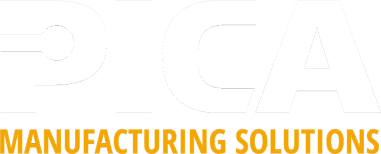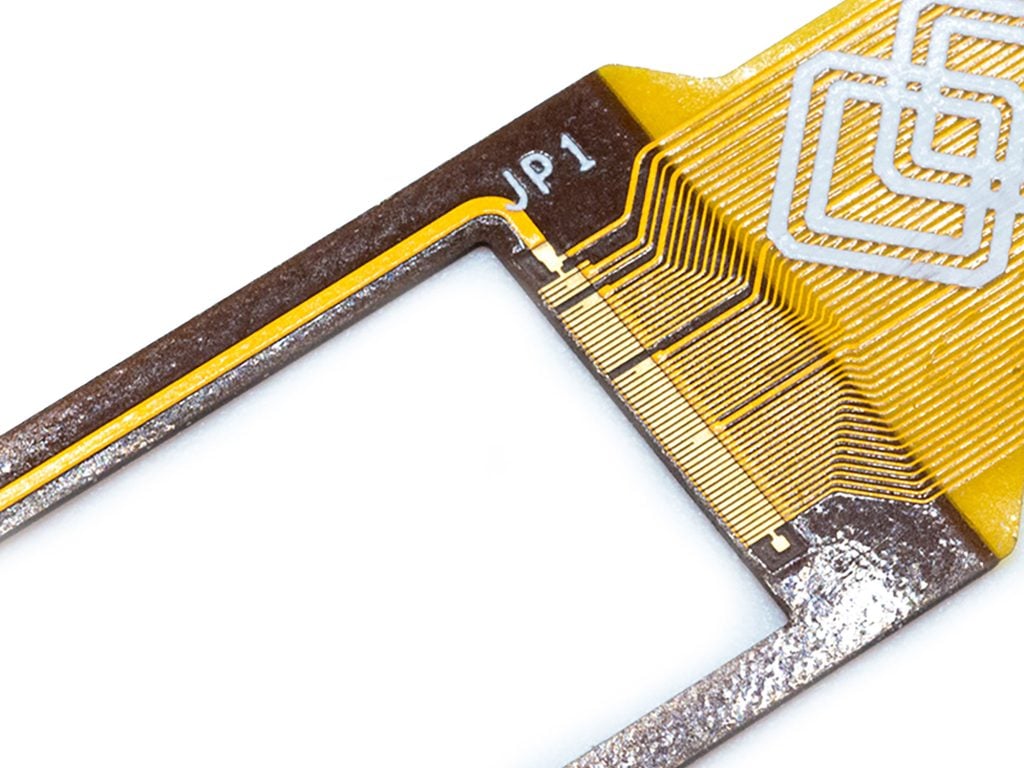Fineline & HDI Printed Circuits
Ultra-Fine-Pitch, High-Density Circuits for Compact, High-Performance Electronics
Fineline and HDI (High Density Interconnect) printed circuit boards are engineered to support miniaturization, high-speed signals, and dense component integration. PICA’s advanced PCB and flex manufacturing enables fine-line trace widths, laser micro-vias, ultra-thin dielectrics, and multi-build-up stack-ups that meet the demands of today’s wearable, RF, medical, automotive and high-frequency systems.
Why Choose Fineline / HDI Printed Circuits?
• Superior Component Density – Enables packing more I/O and functionality in a smaller footprint.
• Ultra-Fine Trace Capability – Achieve line/space down to 25–50 µm, using subtractive or mSAP/mSAP-like processing.
• Micro-Via & Via-In-Pad Support – Laser-drilled micro-vias, stacked or staggered, allow escape routing from dense BGAs and high-pin-count packages.
• High-Speed & RF-Ready Performance – Controlled impedance, ultra-thin dielectrics (as low as 12–25 µm) and low-loss materials support high-frequency and mixed-signal designs.
• Manufacturability & Reliability – Early DFM engagement, strict etching control, and 100% AOI ensure high yields in fine-line builds.
• Flex-HDI & Dynamic-Flex Options – Combine flexible arms + HDI cores or even dynamic-flex fine-line sections for moving applications.
Fineline PCB Capabilities – Highlights
• Laser Direct Imaging (LDI) for line/space ≈1 mil (≈25 µm) in rigid, flex, and rigid-flex builds.
• Ultra-Thin Copper options including rolled-annealed (RA) and thin electrolytic foils for improved fine-line routing and bend reliability.
• Multi-build-up HDI stack-ups such as 1+N+1, 2+N+2, and flex HDI buildup structures.
• Blind, buried, stacked and staggered micro-vias ≤ 0.15 mm with copper fill and via-in-pad options.
• Modified Semi-Additive Process (mSAP / mSAP-like) for <50 µm fine-line routing and controlled sidewall geometry.
• Thin dielectric materials (down to ~12–25 µm) for impedance targets, RF performance, and compact trace separation.
• Integrated rigid-flex HDI, dynamic flex + fine-line hybrid designs, and thin-core options for harsh environments.
• Inspection & Quality Assurance: AOI, X-Ray, flying probe, impedance verification, and micro-section analysis.
• Engineering Support: early layout review, stack-up optimization, micro-via strategy, reliability modeling, and material selection.
For technical information on PICA’s Fineline Flex PCB capabilities, click the button below.
Global Design & Manufacturing Support
With engineering teams in the U.S. and manufacturing in Malaysia, PICA supports prototypes through scaled production. We collaborate early to optimize stack-ups, choose low-loss materials, refine micro-via strategy, tune line/space limitations, and control impedance from Day 1. This prevents cost overruns, improves yield, and accelerates time-to-market for high-density builds.
Benefits of Fineline / HDI Circuits
High-Density Designs
Fineline/HDI builds enable greater routing density and component placement in smaller form factors—ideal for compact RF, sensor, and high-speed modules.
Enhanced Signal Integrity
Ultra-thin dielectrics, tight trace spacing, and precise etching improve impedance accuracy, reduce skew, and maintain low-loss transmission paths.
Miniaturization-Ready
Sub-50 µm traces and stacked micro-vias enable smaller boards, more features, and lighter assemblies without sacrificing reliability.
Manufacturing Efficiency
Controlled etching, LDI, copper fill via-in-pad, and automated inspection deliver high first-pass yield and minimized scrap—reducing total cost.
Dual-Flexibility
HDI isn’t limited to rigid boards. PICA supports rigid-flex HDI and dynamic-flex fine-line builds, enabling motion + density in one circuit.
Markets We Serve with Fineline / HDI Circuits
Mobile & Wearable Devices
Foldables, compact wearables and IoT modules rely on ultra-dense PCB real-estate and precision interconnects—ideal for HDI and flex HDI.
Medical Devices
Miniaturized sensors, implantables, and micro-assemblies demand ultra-fine routing, controlled impedance, and high-reliability micro-vias.
Automotive & Transportation
ADAS modules, radar systems and harsh-environment controls benefit from fine-line HDI that withstands vibration and thermal stress.
Telecommunications & 5G Infrastructure
RF modules, mmWave antenna arrays, and interposers require ultra-thin dielectrics, fine-line routing and stable impedance control.
Industrial & Defense Electronics
Rugged systems in UAVs, aerospace, and high-density sensor modules rely on fine-line durability, reliability, and extreme miniaturization.
The blogs featured below expand on this page’s content, offering detailed insights into specific design, manufacturing, and application topics that provide added relevance and deeper context for engineers and decision-makers.
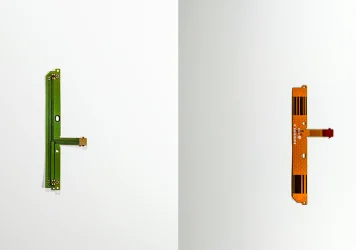
LPI Solder Mask vs. Polyimide Coverlay: Choosing the Right Protection for Flexible Circuits
Protecting the copper circuitry on a flexible printed circuit (FPC) is essential to ensuring long-term reliability and...
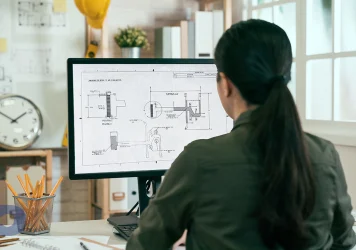
Why You Should Involve Your Flex Circuit Manufacturer Early in the Design Process
In product development, timing is everything. But too often, the flexible circuit comes late in the conversation,...
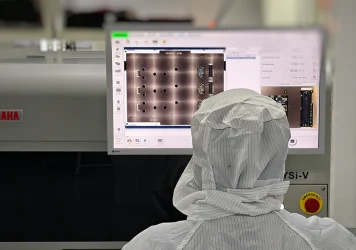
See What You Can’t See: AOI & X‑Ray Inspection in PCB Assembly
In today’s electronics world, component densities are rising, geometries are shrinking, and reliability expectations are higher than ever. Failures at...

Rigid-Flex: The Winning Technology Behind Smart Impact Monitoring Mouthguards
When it comes to sports safety, precision and reliability are non-negotiable. Impact monitoring mouthguards, like those used to measure head...
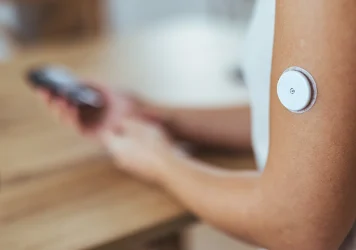
Next-Generation Wearable Health Monitoring: Polymer Thick Film Electronics and Biosensor Patches
Polymer Thick Film (Printed Electronics): Thin, Flexible, and Designed for the Human BodyPolymer Thick Film (PTF) technology, commonly referred to...
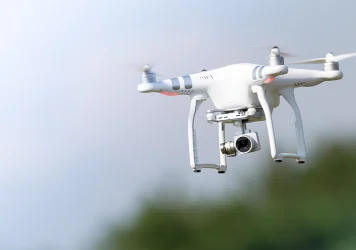
Flexible Circuits Powering the Next Generation of Drones
Modern drones demand electronic systems that are lightweight, compact, and highly reliable. Traditional rigid PCBs often struggle to...
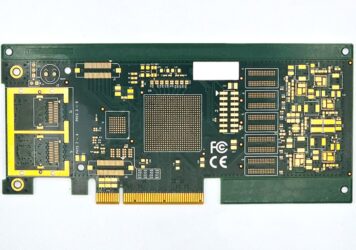
Designing for Edge-Mounted PCBs: Best Practices and Considerations
When space is tight, or when PCBs need to mate with enclosures, panels, or external interfaces, edge-mounted boards can offer...

Roll-to-Roll Processing: Driving the Next Generation of Flexible Circuits
Electronics are shrinking, getting lighter, and expected to perform flawlessly in demanding environments. From medical
